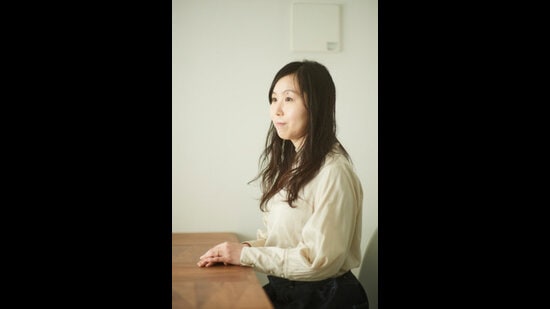Review: Diary of a Void by Emi Yagi
A critique of heteronormative society and the gendered world that we live in, Diary of a Void is also an acute portrait of loneliness
Emi Yagi’s Diary of a Void takes us into the life of Shibata who works in a company that manufactures cardboard cores for paper products. Shibata is sick of cleaning up after every meeting and making coffee for her co-workers. But why does this responsibility falls onto her? Because she’s an only woman in the department. One day, she refuses to clear away her co-workers dirty cups by announcing that she’s pregnant – it’s a lie – and the smell nauseates her. Thus begins her liberation from this sexist workplace cycle.

After the announcement of her fake pregnancy, the immediate response of her senior colleagues is unexpected. “What seemed of great concern to my bosses, rather than when I would clock out, was the question of the coffee. Who would make it? Who was going to deal with the cups? Where was the milk? They asked me to type up step-by-step instructions”. Bizarrely, it turns out her male co-workers don’t know how to handle the simple task of making instant coffee.

After the announcement of her pregnancy, Shibata begins to be treated differently. While earlier she often worked overnight, she now leaves work at 5 pm. She frequently visits a grocery store on the way home to buy ingredients for healthy and nutritious meals which she cooks every day rather than consuming packaged and ready-to-eat meals.
Structured in the form of the total weeks of a pregnancy with chapters running from week 5 to week 40, the novel follows Shibata as she stuffs towels into her shirt and consults a diary app that tracks every stage of her pregnancy by detailing the size of foetus in each month. In the later months, she even joins an aerobics class for expectant mothers. All of this leads Shibata to think, “So this is pregnancy. What luxury. What loneliness.”
The book itself is an acute portrait of loneliness.
Shibata is alone most of the time with little social contact except with her co-workers during office hours. Her friends are all either juggling with kids or are on their second marriages. Shibata, who is single, in her mid-thirties, and lives alone now has more free time than ever before to think about everything from her health to her life. She decides to make space for something that’s entirely her own and that no one else can see, even if it’s a lie.
“Maybe that’s what making a family is all about: creating an environment in which people make space for one another – maybe without even trying, just naturally, to make sure that nobody’s forgotten.”

An extremely amusing narrator who’s quietly critical of society, Shibata is infuriated by the constant judgement and the questions thrown at he about the father of her child, its gender and proposed name. The novel is a powerful critique of how society tends to interfere in people’s lives by telling them that they aren’t doing the “right” thing while not genuinely caring about them.
Towards the end, The Diary of a Void makes a tonal shift with Shibata believing that she is truly pregnant. This might leave the reader a bit confused but the narrative holds together and the reader finds himself invested in the narrator who is rebelling against a society that’s quite unaware of its flaws and continues to be blind.
Though this is a critique of Japanese society, Diary of a Void is universal in its concerns and in its treatment of the gendered world that we live in.
Hritik Verma is an independent reviewer. He blogs at allayingart.wordpress.com. He is @Hritik38233434 on Twitter and @allayingart on Instagram





